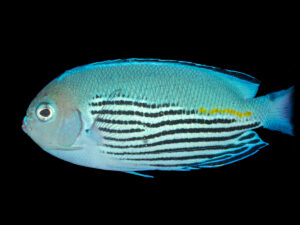Subtotal:
$152.96
Related products
-
Yellow Assessor
$45.00
$36.00Select options This product has multiple variants. The options may be chosen on the product page -
Watanabe Angelfish
$125.00
$100.00Select options This product has multiple variants. The options may be chosen on the product page -
Lyretail Anthias
$75.00
$60.00Select options This product has multiple variants. The options may be chosen on the product page -
Barrier Reef Clownfish
$35.00
$28.00Select options This product has multiple variants. The options may be chosen on the product page -
Pink Barred Zebra Goby
$45.00
$36.00Select options This product has multiple variants. The options may be chosen on the product page -
Powder Brown Tang
$150.00
$120.00Select options This product has multiple variants. The options may be chosen on the product page -
Cooperi Anthias
$30.00
$24.00Select options This product has multiple variants. The options may be chosen on the product page -
Engineer Goby
$35.00
$28.00Select options This product has multiple variants. The options may be chosen on the product page -
White Cheek Tang
$150.00
$120.00Select options This product has multiple variants. The options may be chosen on the product page -
Barrier Reef Chromis
$15.00
$12.00Select options This product has multiple variants. The options may be chosen on the product page -
Bicolor Angelfish
$45.00
$36.00Select options This product has multiple variants. The options may be chosen on the product page -
Lawnmower Blenny
$45.00
$36.00Select options This product has multiple variants. The options may be chosen on the product page
Yellow Breasted Wrasse
$100.00
$80.00
Please Note: Due to variations within species, your item may not look identical to the image provided. Approximate size range may also vary between individual specimen.
Deep dive >
Quick Stats
- Dietry Requirements
- Compatible With
- Maximum Fish Size (cm)
- Minimum Tank Size (L)
- Same Species Aggression
- Other Species Aggression
- Care Requirements
The Yellow Breasted Wrasse is a moderately sized wrasse with a sleek, elongated body with dorsal and anal fins that extend almost the entire length of the fish. Towards the rear of these fins are a pair of large, blue eyespots that help protect the fish by disorienting or confusing potential predators. The beautifully coloured Yellow Breasted Wrasse is primarily dark blue to purple in colouration with many vibrant bright blue dots. The bottom front half of the Yellow Breasted Wrasse is bright yellow or gold in colouration which lends to its common name.
For best care, the Yellow Breasted Wrasse should be housed in an established, well-filtered aquarium of at least 400 litres in size or larger. A layer of fine sandy substrate is essential for the Yellow Breasted Wrasse as it will burrow into the sand to sleep or to seek shelter when it feels threatened. Do not use crushed coral or other coarse substrate as the Yellow Breasted Wrasse has a poor survival rate in systems with such coarse substrates. The ideal aquarium setup will also have plenty of live rock. Be sure to arrange your aquarium landscape so there are ample nooks and crannies for your Yellow Breasted Wrasse to explore, seek refuge, or forage for food. As juveniles, the Yellow Breasted Wrasse may be kept in numbers but keep in mind that they may demonstrate aggression towards each other when fully grown.
The natural diet of the Yellow Breasted Wrasse consists of benthic invertebrates and as such, large hungry Yellow Breasted Wrasse may pick at desirable ornamental invertebrates including fan worms, shrimp, and other crustaceans in the home aquarium. However, the Yellow Breasted Wrasse typically will not harm sessile invertebrates including soft or stony corals. In the home aquarium, the diet of the Yellow Breasted Wrasse should consist of a diverse variety of food items including vitamin enriched frozen mysis shrimp and brine shrimp, and other meaty foods along with high quality marine flakes and pellet foods.
Related products
-
Barrier Reef Clownfish
$35.00
$28.00Select options This product has multiple variants. The options may be chosen on the product page -
Pyramid Butterflyfish
$75.00
$60.00Select options This product has multiple variants. The options may be chosen on the product page -
Lyretail Anthias
$75.00
$60.00Select options This product has multiple variants. The options may be chosen on the product page -
Emperor Angelfish
$200.00 – $400.00
$160.00 – $320.00Select options This product has multiple variants. The options may be chosen on the product page















